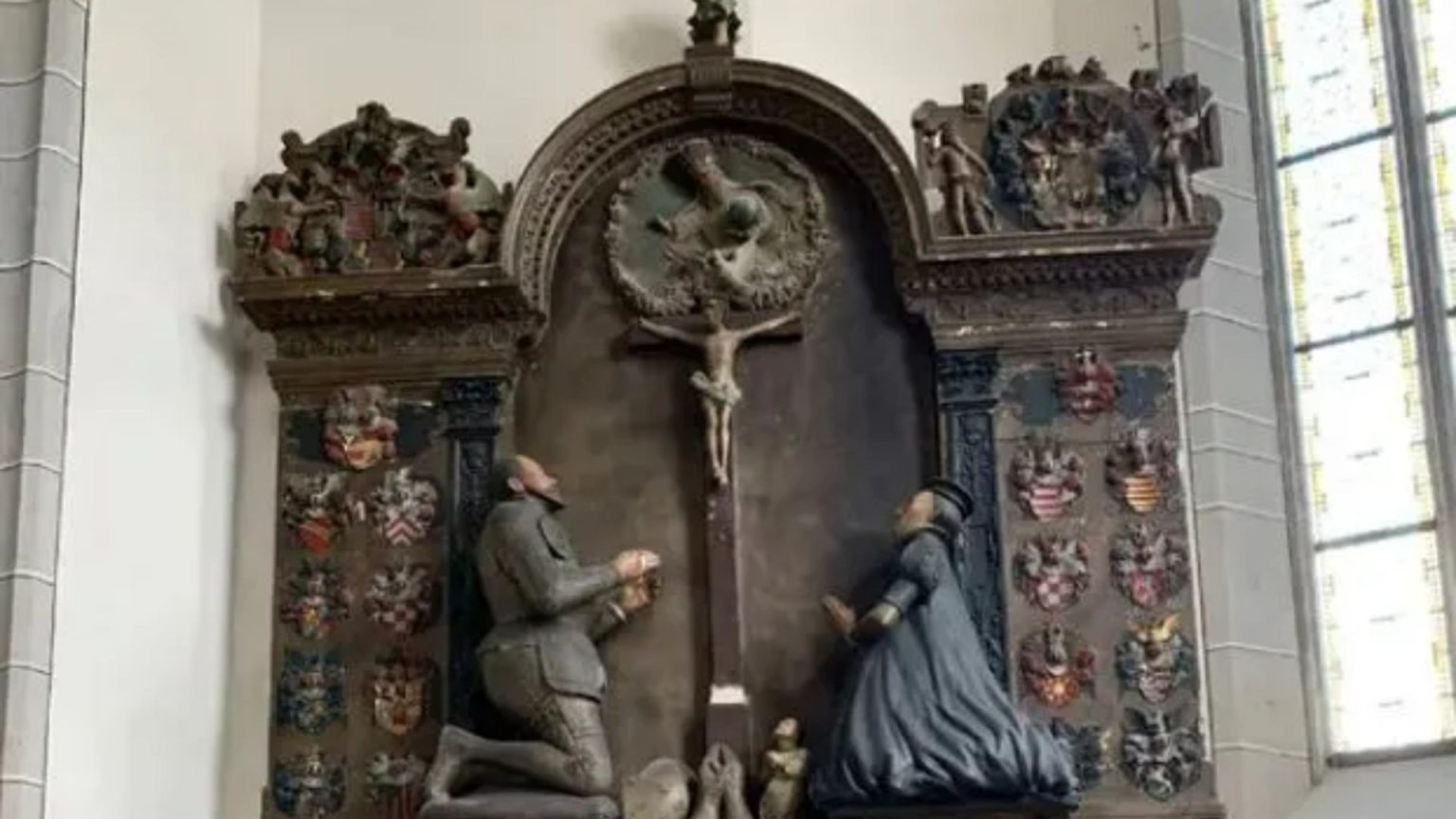In a remarkable discovery reminiscent of a historical thriller, restoration workers stumbled upon a hidden treasure trove concealed within the leg of a statue in St. Andrew’s Church, Eisleben, Germany. This “huge fortune,” consisting of 816 gold and silver coins dating back 400 years, was unexpectedly unearthed during routine restoration work in 2022, but the details were kept confidential until recently. The discovery adds another layer of intrigue to the church’s already rich history, as it was within its walls that Martin Luther, the prominent figure of the Protestant Reformation, delivered his final sermons in 1546. The concealed coins offer a glimpse into the tumultuous period of the Thirty Years’ War, providing tangible evidence of the lengths to which people went to safeguard their valuables from the pervasive threat of plundering armies.
The surprising discovery occurred when workers noticed four “bulging purses” tucked away within a cavity in the leg of a sandstone statue that formed part of a grave monument for a count and countess. The assortment of coins includes a rare “golden angel” coin, gold ducats, an array of silver coins, and hundreds of ancient pennies. Ulf Dräger, curator and head of the State Coin Cabinet in Germany, described the find as “nothing short of a miracle,” highlighting the improbability of the treasure remaining hidden for so long. While a precise valuation of the hoard is still pending expert analysis, Dräger affirmed that it represents a “huge fortune,” far exceeding the annual earnings of a craftsman of that era. This assessment underscores the significant value of the discovery, both historically and monetarily.
The origin of the concealed wealth points not to the church’s regular Sunday collections, but rather to accumulated income generated from special services conducted by the pastors, such as weddings, baptisms, and funerals. Additional revenue came from “chair fees,” a practice where congregants paid for preferred seating arrangements within the church. These details provide a fascinating insight into the economic practices of the time and the various sources of church income. The decision to hide the treasure stemmed from the constant threat of pillaging by Swedish troops during the Thirty Years’ War, a conflict that ravaged the region and forced locals to provide shelter, food, and substantial sums of money to the occupying forces.
The Thirty Years’ War, a series of devastating conflicts that engulfed Europe between 1618 and 1648, provides the historical context for this remarkable discovery. Initially sparked by religious tensions between Protestant and Catholic states, the war evolved into a complex political struggle involving many of Europe’s major powers, including Spain, Austria, England, Denmark, the Dutch Republic, and Sweden. The war’s devastating impact on Eisleben is evident in the dramatic population decline, with the city losing approximately half of its inhabitants between 1628 and 1650. The hidden coins serve as a poignant reminder of the hardships endured during this period of “constant war horror.”
This accidental discovery provides a tangible link to the past, illuminating the economic realities and the constant threat of violence that shaped life during the Thirty Years’ War. The coins, carefully hidden within the statue’s leg, represent more than just a monetary treasure; they are a testament to the resourcefulness and resilience of those who lived through a period of immense upheaval. The meticulous preservation of these coins for centuries underscores their enduring historical significance. The ongoing analysis of the hoard promises to reveal further insights into the economic and social dynamics of the 17th century, adding further depth to our understanding of this pivotal period in European history.
The discovery at St. Andrew’s Church not only enriches our understanding of the past, but also offers a compelling narrative of human ingenuity and resilience in the face of adversity. The coins, silent witnesses to a tumultuous era, provide a unique window into the lives and struggles of those who sought to protect their community’s resources amidst the chaos of war. This “huge fortune,” unearthed centuries later, serves as a powerful reminder of the enduring value of historical preservation and the untold stories that lie hidden within the walls and artifacts of our past. The ongoing research into the coin hoard promises to further illuminate this fascinating chapter of history, offering a deeper appreciation for the challenges and triumphs of those who lived through the Thirty Years’ War.




